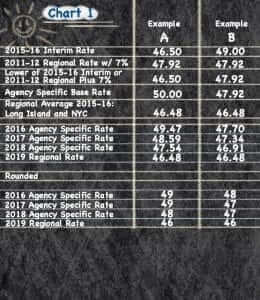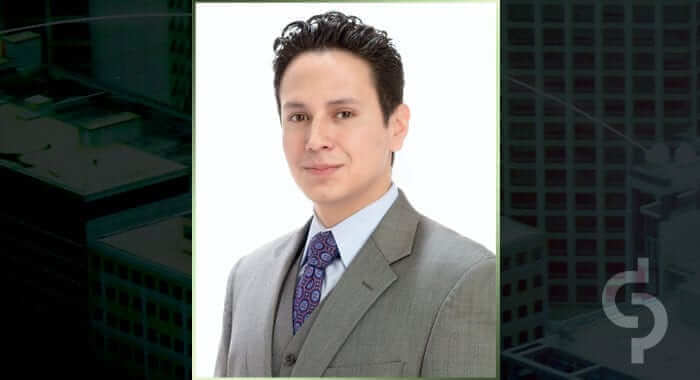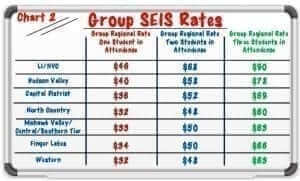Unless you live under a rock, you know that the new SEIT reimbursement methodology was recently issued. As required by Chapter 56 of the Laws of 2014, the new reimbursement rates are fee based and will phase-in regional average rates over a period of four years. SED broke the State into 9 regions with the regional average rate determined based upon which region the program’s headquarters is located in. Under the new regulations, providers are paid a SEIT rate based on the number of half-hour units delivered, provided that the total number of units delivered does not exceed IEP mandated levels. In the past, such payments were based upon mandated services, regardless of whether or not they were delivered. In order to compensate providers for this discrepancy, SED built in a 7% absentee factor for the conversion of mandated rates to delivered rates.
According to SED, a billable unit includes both the ½ hour of direct service time as well as non-direct services including coordination of service, preparation for and attendance at CPSE meetings, parent conferences, classroom observations, and travel. Based upon SED regulations, depending on what region you operate in, and the region’s geographic sparsity, it is projected that these non-direct services encompass between 28% on the low-end and 34% to 40% at the high-end, of the time spent in delivering services. Providers need to make sure, in completing their CFR’s, that they consider both the direct and non-direct time in completing CFR-4, otherwise average salaries paid to SEIT staff will be high. In developing the SEIT rates, SED excluded $5 million of SEIT teacher salaries and related fringes as SED determined the SEIT staff compensation was above the regional average for such individuals. Failure by providers to adjust how they are paying staff, could result in future disallowances when calculating regional average rates, resulting in further declines in such rates.
Furthermore, in developing the SEIT rates, SED determined that all supervising teachers should be classified as non-direct (position title code 518), regardless of how much of their time is spent in a supervising capacity. For all tuition based programs, a supervisor will still be considered direct (code 215), if they spend at least 75% of their time in a direct teaching capacity and no more than 25% of their time in a supervisory capacity. The new SEIT methodology also reduces the allowable non-direct care screen from 30% to 25% for SEIT providers only. 
To calculate your SEIT rate, compare your 2015-16 interim rate (using actual rate including cents) with the 2011-12 regional rate adjusted for the 7% attendance factor, if your interim rate is lower, adjust the interim rate by the 7% attendance factor (divide by .93) and if your 2011-12 attendance adjusted regional rate is lower, you do not adjust your 2015-16 interim rate. This is your agency specific base rate. You then deduct the appropriate 2015-16 regional average rate (with cents) from your base rate. This difference will be phased in over 4 years, adding 85% of the difference to the 2015-16 regional average rate in fiscal 2016, 60% in fiscal 2017, 30% in fiscal 2018, and by 2019 you will receive the regional average rate. Please see chart 1 for examples.
The new SEIT rates also includes specific rates for groups of between 1 and 3 SEIT students. The group rate for a group of 1 is the regional average rate. For groups of 2 or 3, see chart 2.
While you will still be required to file a cost report, the 2015-16 rates will not be subject to reconciliation, however any unspent funds must be retained and spent in future years on allowable costs pursuant to the Reimbursable Cost Manual in effect for the year in which the expenses are incurred. Distributions to owners and repayment of back liabilities are not expenses. If the 2015-16 rate year is audited, and disallowances are determined, such disallowances would be recouped, however, such disallowances would not impact future rates as they would have in the past.
Finally, the 7% attendance factor is significantly lower than what most agencies are experiencing. As a result, if they do not adjust the rate they are paying their SEIT teachers to accommodate for the lower collections, this could result in financial losses for the agency.
We understand the new methodology is not easy. If you have any questions about the new methodology, please do not hesitate to call us and we would be happy to walk you through it.
This article was also featured in our newsletter Special Ed-ition Vol. 14

Albert Borghese, CPA
Director
Albert is a member of Cerini & Associates’ audit and consulting practice where he focuses on serving the firm’s special education and nonprofit clients. Albert is also involved in the marketing and development of the firm, and frequently participates in recruiting efforts, and research.






